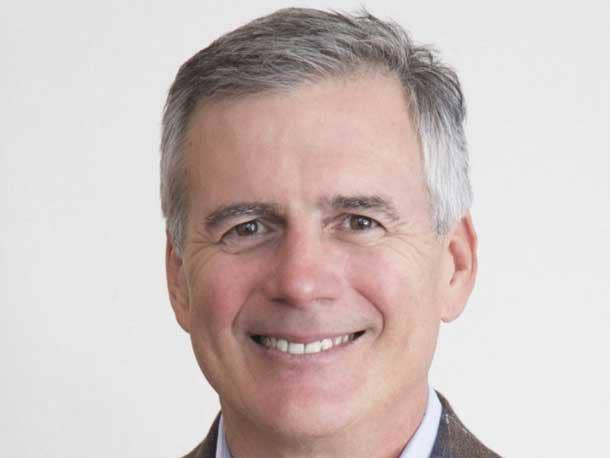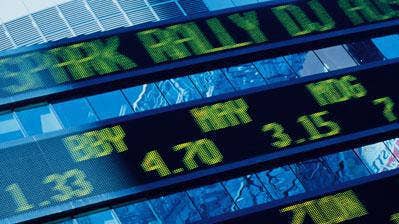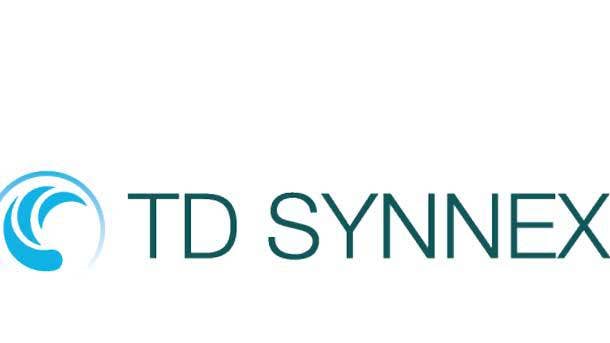TD Synnex CEO: Tech Data, Synnex Integration Lays Ground For Growth
‘I would expect that the experiences around our cloud platforms, the experiences around our as-a-service capabilities, the experiences around the depth of the portfolio, will provide a better experience versus if we had gone on our own for our major stakeholders,’ says TD Synnex CEO Rich Hume.

TD Synnex: Staying Focused On The Prize As Integration Continues
TD Synnex, formed last month from the merger of Tech Data and Synnex, the second-largest and third-largest IT distributors, is knee-deep in the process of integrating the people, resources, and line cards on which the planet’s largest IT distributor is built.
CRN caught up with TD Synnex CEO Rich Hume after the company on Tuesday reported its third fiscal 2021 financials to talk not only about the quarter, but about the complexities that surround the largest IT distribution merger, including the state of the integration of the two, changes in the product line cards and the resources needed to meet the changes, and the impact on channel financing.
“I would anticipate by the end of our fiscal year, which is at the end of November, that we’ll have a clear view as to what our platform tools and application suite looks like,” Hume told CRN. “We’re very, very focused on making sure that we’re optimizing around customer and vendor experience as we make these decisions.
Hume also talked about the supply constraints currently impacting the IT industry, noting that patience is needed as those constraints won’t likely be fully resolved until the second half of 2022.
“As we go through phases of COVID, I think the productivity swings are not as great as they were early on because we know how to live and adapt,” he said.. So my crystal ball would say that the anecdotal view of our vendors saying continued constraint in the first half [of next year] with relief in the second half is probably the best estimate right now.”
TD Synnex Tuesday reported its third fiscal quarter 2021 financials, which was really the last report for Synnex as a standalone company before the September 1 close of the historic merger between Tech Data and Synnex with a combined revenue of just under $60 billion. Synnex, during the quarter, reported a slight 1.9-percent drop in revenue to $5.20 billion, and 9.7-percent growth in GAAP earnings per share and a 13.8-percent rise in non-GAAP earnings per share.
For a look at what is happening at the world’s largest IT distributor, click through the slideshow.
But first, a terminology note: Hume, like most distribution executives, uses the term “customer” to mean solution providers, which are who purchase products and services from distributors. He is not referring to end-user customers.

TD Synnex share prices fell quite a bit after Tuesday’s fiscal third quarter financial report. What happened?
Obviously I can’t predict what it was that the market was reacting to. Certainly the earnings were above the consensus report. I think the revenue might have been a little bit light relative to consensus. That was an outcome of the supply constraint that the entire industry is faced with today. We had estimated that we’d have a level of constraint going into the quarter, but it was a bit greater than that overall.
What are the areas where you're seeing supply constraints?
Traditionally we talk about the PC ecosystem segment and the advanced solutions segment. What I would tell you is, the backlog has grown. It was big and it’s getting bigger. And in fact, it’s across all major product categories currently, meaning PC ecosystems and advanced solutions. So the constraint is pretty much across the board right now.

Are you expecting things to get looser or tighter going forward?
We obviously have a reliance upon the vendor views of that because they’re the ones that are in charge of the supply. What I would say anecdotally is, the view is that things will begin to ease as we move through time, but most would say that the constraints will be there for the first half of the year. And some would even say that there’ll be some categories that [will be constrained] going to the second half of next year. So I think probably a pretty good general statement is that constraints are expected to continue in the first half and potentially go into the second half of next year.
And how much that constraint comes from the clogged ports and other transportation issues vs. manufacturing side issues?
As an anecdotal generalization, we hear there are constraints in chips. We hear there are constraints relative to shipping and things getting caught in ports. We hear that there are constraints even in some other commodities, plastics, et cetera. So right now it’s I think a bit broad-based. I wouldn’t be able to kind of say this one’s greater than this one. I think we all experience even in our personal lives the constraints in other industries, furniture or clothing or whatever else. This is, I think, fairly broad-based. But my speculation is that as COVID stabilizes, which the current phase now seems to be stabilizing globally, that will give more of an opportunity to gain on the issue. And the other thing that I would say is that as a world, as we go through phases of COVID, I think the productivity swings are not as great as they were early on because we know how to live and adapt. So my crystal ball would say that the anecdotal view of our vendors saying continued constraint in the first half [of next year] with relief in the second half is probably the best estimate right now.

The merger of Tech Data and Synnex closed September 1. How far along is TD Synnex in the integration of the two companies?
The way we think about integration is we put a lot of emphasis on your Day One to make sure that we have a good experience for customers and vendors and co-workers. I believe that we’ve done quite well in that regard. And I can honestly tell you as I sit here and I search for it, I’m not aware of any negative customer or vendor sentiments. I mean, it’s been very, very positive and supportive. Now as we moved through it at close, some of the regulatory boundaries were removed in terms of what we can jointly talk about. So now we’ll get into the next phase of the integration, which will have us look at, for example, all of our IT assets, platforms and tools and applications, and then determine what suite of capabilities we’ll take to our customers and vendors. We’re in the middle of that work right now. And I would anticipate by the end of our fiscal year, which is at the end of November, that we’ll have a clear view as to what our platform tools and application suite looks like. We’re very, very focused on making sure that we’re optimizing around customer and vendor experience as we make these decisions.

Is the integration of Tech Data and Synnex a distraction? Does the amount of management time that you have to put into sorting out these issues distract from your core mission?
Remember that we were on a digital transformation strategy at legacy Tech Data. The way I think about this is, that digital transformation strategy continues, but there’s a larger pool of assets to leverage. So I don’t think of it as a constraint, but I think of it rather as an opportunity to actually improve customer and vendor experience as we bring this together. One of the things that we’re committed to is making sure that we provide a lot of transparency and a lot of visibility and are clear on longer timelines such that, as we go through this transition, they can adapt as well, they being the customers and vendors.
You mentioned digital transformation. Did the work that you had put into digital transformation before the merger was even announced have an impact in terms of making this huge merger smoother than it might have been?
The way I would think about it is, we were on our path, and now we have a little bit of a replan to do because we have more capabilities and assets to consider to bring to market and to bring to bear. I think both companies were on a pretty productive journey with their respective vendor and customer sets. But now as we come together and choose the best of both, we’re really looking forward to enhancing that experience versus what we might’ve singularly been able to achieve prior to coming together.

Is there a lot of consolidation in terms of the product line cards both companies previously sold? Is there a lot of overlap or areas to consolidate?
Certainly, we have overlap in our line cards, but our customer sets are really complementary. So if you think about it, there are some customers that [Tech Data and Synnex] both had business in, but there are many more where we have independent relationships. So there is a lot of work to be done in a lot of sales and marketing that will proceed. I would foresee that, as we anticipate growing going forward, we’ll need more marketing and sales resources in the future, as opposed to less as we continue to grow the business. ... We need a lot of resources to serve the market. I wouldn’t anticipate a reduction in resources in the sales and marketing areas by any means.
How about channel partner financing? Financing for channel partners is an important part of what distribution provides. How has the merger impacted channel partner financing?
As we planned for Day One, we actually put a sales support office in place as a place for sellers immediately to go to with issues that might emerge in customer situations. And what I would tell you is, we’ve been very pleasantly surprised whereby Tech Data customers very early on had interest in buying off of Synnex’s line card that we hadn’t historically had. And the reverse is true as well. So this idea of our customer sets desiring offerings off of the complimentary line card is quite evident. The second thing I would tell you is that we had committed to one plus one equals two from a credit perspective or beyond, and we’ve maintained that position. Certainly we’ve had some requests like, ’Hey, I’d like in the total basket of credit, maybe a little bit more on a legacy Tech Data or Synnex side.’ We’ve made adjustments in terms of the capacities between the two companies, but it’s really going very well. And I would say that customers have been working with us very productively on terms and conditions as well. So, the process has been quite smooth.

After the merger actually closed, was there anything that surprised you as you started bringing things together?
On the afternoon of Day One, there was already a sale of something on [the Synnex] line card that Tech Data didn’t have. A pretty meaningfully sized sale. And it happened on Day One. And that was surprising to me. I knew that the opportunity existed, but I didn’t think it would materialize that quickly. So that was a pleasant surprise. I would say that I really haven’t had any anything that surprised us on the downside or negative. I think it’s really due to the thorough planning that we did as we pursued Day One. So, knock on wood, today things have gone quite well. And we look forward to maintaining that momentum moving forward.
TD Synnex has overlapping product managers, sales staff, and so on from both the legacy Synnex and legacy Tech Data sides. Do you expect to see a consolidation on the partner-facing segment of the combined company?
I’d like to take it to a global level here for one moment. Legacy Synnex was a $20-billion-plus entity. Legacy Tech Data was around $40 billion in sales. We’ve got a $60-billion business. We’ve got a lot of work to do and know the resources that we need to be successful. When a business gets that big, you begin to think about perhaps segmenting by region or whatever the responsibilities, because it can be too big just to think about consolidating down to a single lead if you will. So the message that I would leave you with is, we’re going to generally need all of our people moving forward in sales and marketing. There might be a lead chosen in one product category or another, but we’re offering other opportunities to those individuals based on the size of our business

With the merger now complete and TD Synnex now the largest IT distributor, how will that impact the competitive dynamics of distribution?
My encouragement to myself and all of my TD Synnex colleagues is, don’t become enamored with the size of our business, but rather focus on the service and capability that you’re bringing in front of the customer and in front of the vendor. And I strongly, strongly feel that way. If you bring great service, the business will grow and we’ll have the benefit of that. To answer your question more directly, it comes back to something that you and I have talked about before, and that is that when we take a look at the capabilities that we can bring to market, especially within the new categories of cloud, security, analytics, IoT, et cetera, [both companies] were individually investing in that prior to the merger to build those capabilities. Now we bring the two together with the same size pile of money or greater. And so if you think about us as one company, what we can do with that combined pile of money, it’ll be significantly greater than what we were doing individually. So I would expect that the experiences around our cloud platforms, the experiences around our as-a-service capabilities, the experiences around the depth of the portfolio, will provide a better experience versus if we had gone on our own for our major stakeholders.